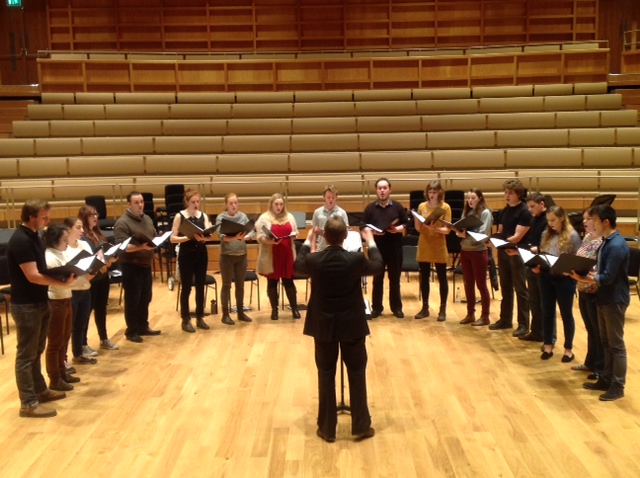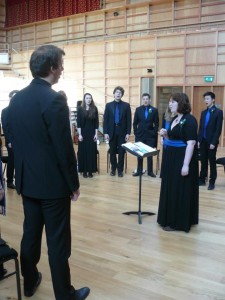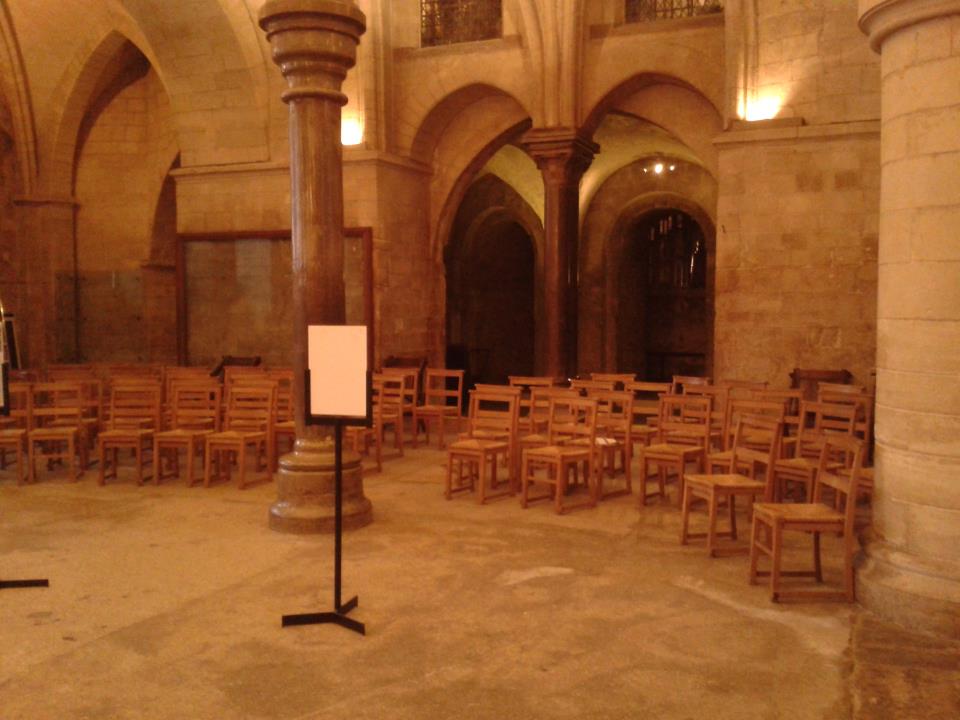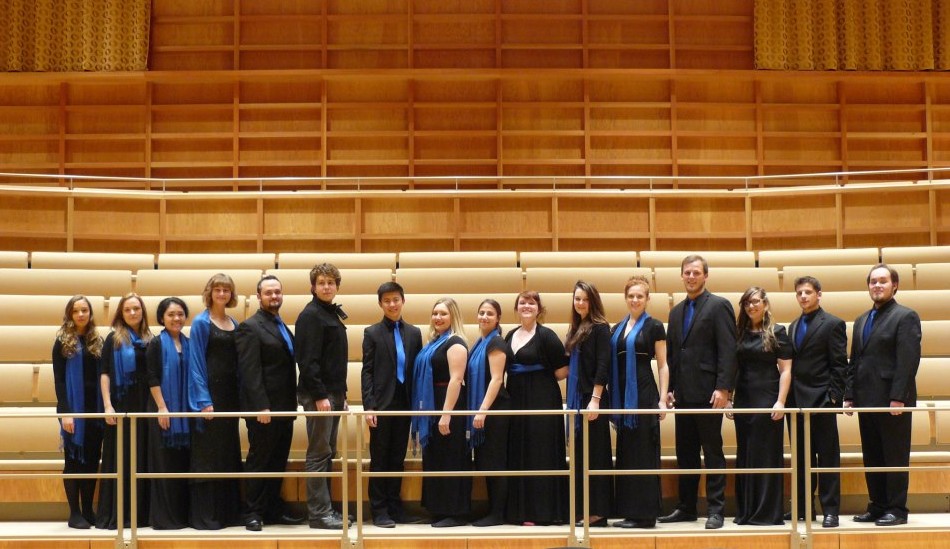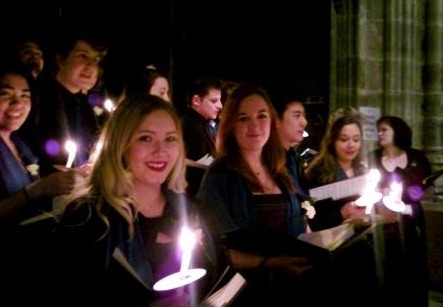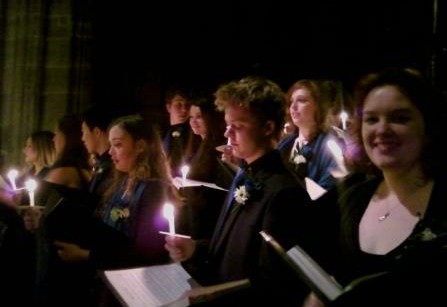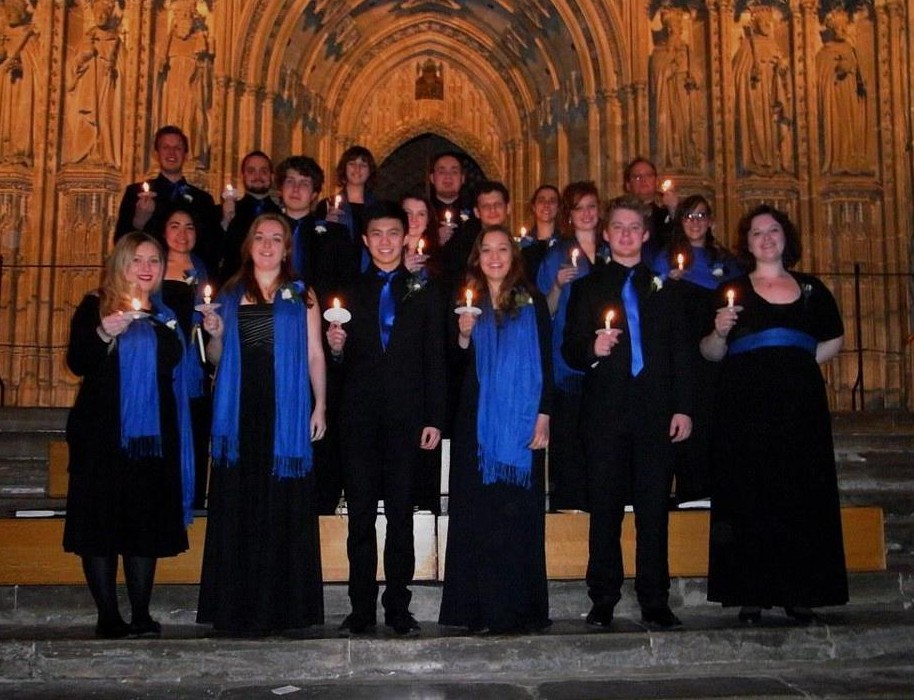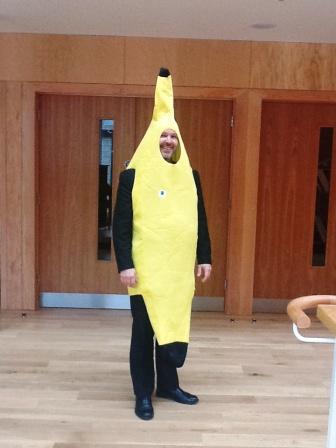And finally, after all the preparations, amassing the repertoire and two days’ worth of auditions, both the University Chamber Choir and Cecilian Choir each had their first rehearsal this week.
There’s no gentle easing in for the Chamber Choir; the first commitment, ‘Music for Advent’ looms in about eight weeks’ time, and the Crypt concert in March, and we have to go from zero to full performance assuredness in no time. Ergo, the first few rehearsals represent a whirlwind tour of the full range of repertoire, in order that the singers can get a feel for the geography of the programmes and see what kind of pieces they will be expected to perform. (The other reason for whirling rapidly through pieces is that, if there’s a piece someone doesn’t like, at least they know we won’t be dwelling on it for hours at a time in these early rehearsals).
I’m pleased to say that everyone seems to be taken with Whitacre’s colourful Lux Aurumque with which we ended the rehearsal – the student conductor, Matt, opened with Byrd’s serene masterpiece, Ave Verum Corpus, and I followed with two movements from Brahms’ Sieben Lieder op.62. After the break, Matt led the first steps into Rutter’s Dashing Away With The Smoothing Iron, which is deceptively simple and offers some real challenges as it builds.
And yesterday, the Cecilian Choir reconvened, this time in mixed-voice formation; sister-choir to the Chamber Choir, it looks as though it might number close to thirty singers, which is particularly exciting! A whistle-stop tour of some of the repertoire for this particular Choir took in the ‘Kyrie’ from Hassler’s Missa super Dixit Maria, the middle section of Maskat’s evocative Prayer to the Night, the first few pages of Rheinberger’s purple-hued Abendlied, and the second section of Sir John Tavener’s Hymn for the Dormition of the Mother of God, which had the sopranos and altos gliding in medieval-esque parallel fourths whilst the basses were slightly confounded by their line which, on paper, reads simply but actually works against the upper voices to provide those typically Tavener dissonances.After all the preparation and learning over the summer months, it’s a relief finally to be getting to grips with the music, meeting the singers, and getting the Choirs off the ground. Ice-breakers and warm-up exercises served to get people introduced to each other and to singing together in a rudimentary fashion – these first few rehearsals, I always find, are somewhat hesitant as people grow accustomed to singing with strangers and finding their feet with new repertoire in a brand-new choir.
But it promises to be a very exciting year for both choirs – and on Monday, the upper-voice incarnation will meet for the first time to explore some medieval pieces. Watch this space…

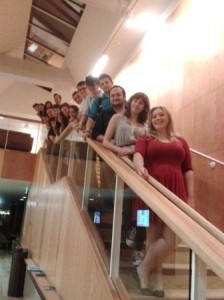


 A veritable cultural feast; come and see it this Wednesday, 1.10pm in the Colyer-Fergusson hall – admission free!
A veritable cultural feast; come and see it this Wednesday, 1.10pm in the Colyer-Fergusson hall – admission free!
